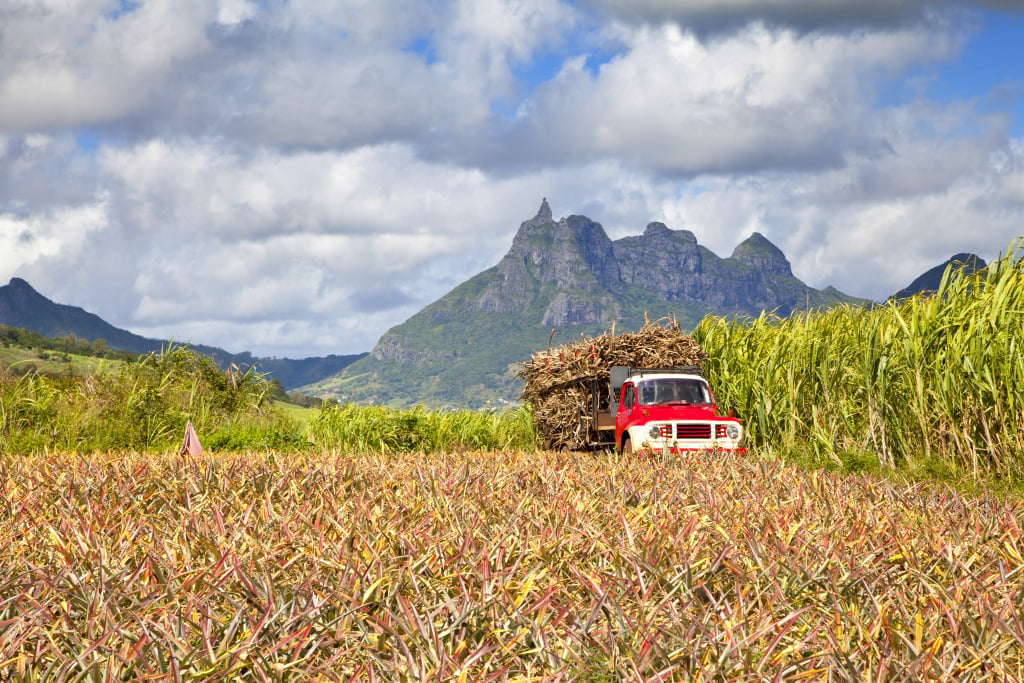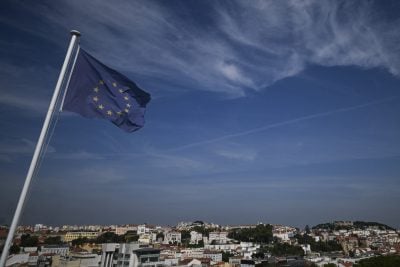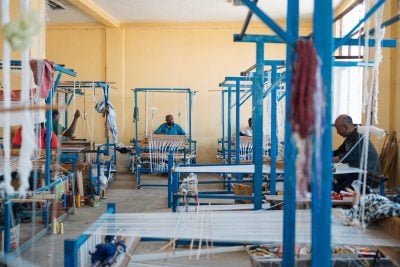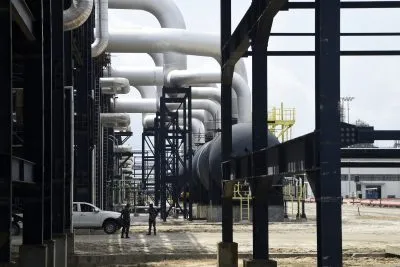Covid-19 hit Mauritius hard economically by bringing global tourism to a halt and forcing the country to shut its borders. Its economy shrank by 18%, its first recession in four decades, forcing the government to dig deep to spend 47bn Mauritian rupees ($1bn) in wage assistance schemes and another Rs30bn (out of a total war-chest of Rs80bn set aside) in loans through its central bank to troubled large companies to prevent them from closing down and sparking massive job losses.
Now the government believes the worst is behind it, expecting the economy to rebound by 9% over the next 12 months. The IMF puts it at much more modest 6.6%. Much of the government’s optimism comes from its expectations of restarting the country’s tourism sector, which accounts for as much as a quarter of the country’s GDP and 22% of employment.
As of 15 July, vaccinated tourists can come into the country provided they spend the first 14 days of their stay in one of 14 “resort bubbles”, where they can enjoy hotel facilities including swimming pool and beach, with no restrictions on vaccinated tourists as from October.

The reopening is timed to coincide with an end to the Rs500m ($12m) in wage assistance being paid to the sector each month by the end of September and the pace of vaccinations, with six out of 10 adults having got at least one dose. The official target is to bring in at least 650,000 tourists over the next 12 months (well below the 1.4m arrivals in 2019) as international airlines resume flights to the island.
“I don’t think reaching 650,000 tourists is very realistic,” says Eric Ng Ping Chuen, an economist and director of consultancy firm PluriConseil. “So far we have only had something like 3000 tourists since January and the high season of European tourism is a short window between October and December before you see another low season.”
Fifty-eight percent of tourists coming to Mauritius come from Europe. A lot of the wariness about the recovery of tourism has to do with the fate of the national carrier, Air Mauritius.
Uncertainty around Air Mauritius
Even before Covid-19 plunged global tourism into crisis, Air Mauritius was already a chronically loss-making airline seen to be saddled with bad management. In 2019 it posted a Rs998m ($24m) loss, prompting its management to admit that they needed a new business model. When Covid-19 hit, the airline swiftly went into voluntary administration on 22 April last year.
Its administrators announced that they would reform the airline by cutting costs and selling off its older wide-bodied aircraft – two A340s, one A330, and two A319s.
Just how many flights will be made and where Air Mauritius will end up flying to is less clear. In June the airline’s administrators pushed back the deadline to come up with a rescue plan for Air Mauritius to the end of January 2022, the second time they have delayed unveiling their plans for the future of the airline.
Getting the national airline on its feet again will require a massive cash injection either from the government or from other international airlines, something the administrators have failed to secure so far.
“The issue for the administrators is that few international airlines have the appetite to enter into strategic partnerships right now while at the same time the government, having already spent so much in dealing with Covid-19, just does not have that much cash to spare for Air Mauritius either,” says Kee Chong Li Kwong Wing, former chairman of State Bank of Mauritius Holdings Ltd.
It’s not hard to see why everybody is nervous about Air Mauritius, or why it is casting a shadow over the promise of a robust recovery. Half of all of Mauritius’ tourists come in on Air Mauritius flights, the airline makes up 40% of the country’s air cargo capacity, and it has traditionally been the primary player in efforts to diversify into tourism markets in Asia.
“What happens now is crucial since everything depends on the frequency of flights that Air Mauritius will be able to handle, both for long-haul destinations in Europe and short-haul flights to regional markets like Réunion Island and South Africa. If the airline is forced to drastically cut down on routes, then the government might have to consider liberalising the country’s air access policy,” argues Ng.
Dents in the image
Accustomed to routinely being lauded as one of Africa’s most democratic countries by the Mo Ibrahim Index or the Economist Intelligence Unit, Mauritius has seen its image take a couple of knocks of late. Opposition parties in the country have accused the government of prime minister Pravind Jugnauth of irregularities in the 2019 election and harassment of critics of the government.
This led the V-Dem Institute to place Mauritius among the top 10 most rapidly autocratising countries in the world in March. A month later in April, the country’s telecom regulator proposed routing all social media web traffic through government proxy servers, arguing that it needed to do this because social media companies were not responsive enough to government requests to take down content.
Critics of the proposal accused the government of wanting to censor social media. Under public pressure, the government was forced to disavow the proposal.
It’s not only the country’s democratic credentials that have taken a hit. In February 2020, the Financial Action Task Force (FATF), an intergovernmental organisation, put Mauritius on its grey list and in May 2020 the European Commission identified Mauritius as a high-risk third country with strategic deficiencies in its regulations for countering money laundering and terrorist financing.
The move raised fears of a flight of offshore firms away from Mauritius and the spectre of a banking crisis in a country where funds from its offshore sector account for more than 30% of deposits in domestic banks. According to figures from its central bank, the number of offshore companies in the jurisdiction have actually risen slightly, going from 11,809 in September 2019 to 11,868 in September 2020, but the effects have still been felt.
“Partly, this had to do with Covid which stalled a lot of transactions in the sector. What we have seen so far is that those offshore companies already in Mauritius have preferred to wait and see what happens rather than swallow the costs of restructuring their business, while banks demanding more information before moving money to Mauritius have dissuaded new business from coming in. So while we have seen a flight out of Mauritius, at the same time, little new business has come in, stifling growth in the sector,” says Kee Chong.
In response, the government has introduced a raft of new legislation to plug up regulatory loopholes identified by FATF and the EU, in the hope of reasserting its reputation.

Crisis in exports
Last year Mauritian exporters reported up to 40% of their orders being cancelled due to the global Covid pandemic. Nevertheless, for over a decade now there has been a slow-rolling crisis being played out with Mauritian exports.
Once a mono-crop economy sustained by exporting sugar, the island has since lost its sweet tooth. Since the end of a preferential trade agreement with Europe in 2009, the country has seen prices for its sugar plummet, forcing large sugar manufacturers to diversify into energy production, and switch from raw to specialty sugar and rum.
Small sugar planters have increasingly abandoned their fields. According to official estimates, each year an additional 2,000 hectares of land used to grow cane is abandoned. In the 1970s sugar made up 20% of the Mauritian economy, today it is less than 5%.
A similar dynamic is also affecting textiles, the country’s largest industry, accounting for 53% of exports according to the Mauritius Exporters Association. The end of the global Multi-Fibre Agreement in 2005 made it hard for Mauritian textiles to compete with cheaper exports from Asian suppliers. Already by 2013 the average hourly wage in the Mauritian textile industry was double that of China and since then the gulf has only widened, without any corresponding increase in productivity.
Since 2005 an average of 24 export firms closed shop, with the sector shedding 5% of its workforce each year. Last year Esquel, the country’s oldest and largest textile exporter, announced it was closing its factory in the east of the island. Whatever remains of the industry survives on a mix of imported foreign labour from Asia, rupee depreciation and reliance on the US market.
Being outcompeted and displaced elsewhere, the industry is relying on the duty-free access afforded to its exports by the African Growth and Opportunity Act (AGOA) making the US pretty much the sole major market where Mauritian textiles can still compete with those made in countries like China. What this also means is that the future of the industry is also linked to extensions of AGOA, which is currently due to expire in 2025.
Its other major export industry, processed tuna, which makes up nearly a quarter of the country’s exports, is also reeling because of concerns over overfishing of yellowfin tuna in the Indian Ocean. The Global Tuna Alliance has warned that yellowfin stocks in the region could collapse as early as 2024, prompting major European retailers such as Tesco, Co-op and Colruyt to back calls to boycott tuna sourced from the Indian Ocean.
Under pressure, local tuna processing companies have demanded serious cuts in tuna quotas allowed to foreign fishing fleets and coastal states even though this means short-term financial pain.
Looking east
High hopes are being pinned on China and India to help Mauritius get out of the rut and reinvent itself. Both countries have liberally doled out money for infrastructure in recent years. Beijing has helped fund a dam project, drain works, social housing, a new building for the state television broadcaster, donated new buses and most recently lent money for Mauritius’ Safe City project.
Chinese companies have also stepped in to help revive flagging real estate and smart city projects in the country. India has not been far behind, helping finance the Metro Express project linking the capital, Port Louis, with the town of Curepipe, a new Supreme Court building and health infrastructure.
Both countries have also signed free trade agreements with Mauritius that came into effect this year. The government’s Economic Development Board estimates that the trade pact with China alone would bring an additional Rs12bn ($283m) into annual export earnings and help offset the massive trade imbalance between Mauritius and the two Asian giants: for every rupee Mauritius gets out of exports to both countries, it spends Rs30 in importing from them.
The problem is that without natural resources, Mauritius just doesn’t have much to interest either. Neither need textiles nor sugar from Mauritius.
“I don’t expect to see the trade balance changing much. Even before these treaties, Mauritius was quite open to exports from these countries although there are opportunities for exporting niche products like special sugar, fruit, and rum,” says Louis Amédée Darga, managing director of Straconsult ABDS.
The real prize is in helping Mauritius realise a long-cherished ambition of positioning itself as a conduit for trade and investment between Africa and Asia.
“Neither China nor India have signed a similar agreement with any other African country and coupled with the African Continental Free Trade Area this allows Mauritius, if it plays its cards right, to position itself as a source for value addition, warehousing or trade facilities for Chinese exports into Africa or for raw material from Africa to go to China and India,” argues Darga.
More than physical goods, it is services that many are looking at. The treaty with China includes setting up a clearing house for transactions in renminbi while the one with India includes opening the door for the setting up of joint ventures as well as legal, accounting and engineering companies.
The example many have in mind is Huawei. It entered the Mauritian market in 2003 and three years later set up a shared service centre in Mauritius to provide back-office services to its subsidiaries in 50 African countries. These treaties, Mauritius hopes, will see more Chinese and Indian companies doing the same thing.
When in June 2021 Darga’s company published the results of a survey it had carried out on behalf of Afrobarometer it found that 80% of Mauritians were positive about Indian political and economic influence in the country and 75% liked what China was doing.
Explaining the result, he said that “it is the perception that these two states are benefiting Mauritius in concrete terms. There is no negativity about China or India here.”
Want to continue reading? Subscribe today.
You've read all your free articles for this month! Subscribe now to enjoy full access to our content.
Digital Monthly
£8.00 / month
Receive full unlimited access to our articles, opinions, podcasts and more.
Digital Yearly
£70.00 / year
Our best value offer - save £26 and gain access to all of our digital content for an entire year!
 Sign in with Google
Sign in with Google 



